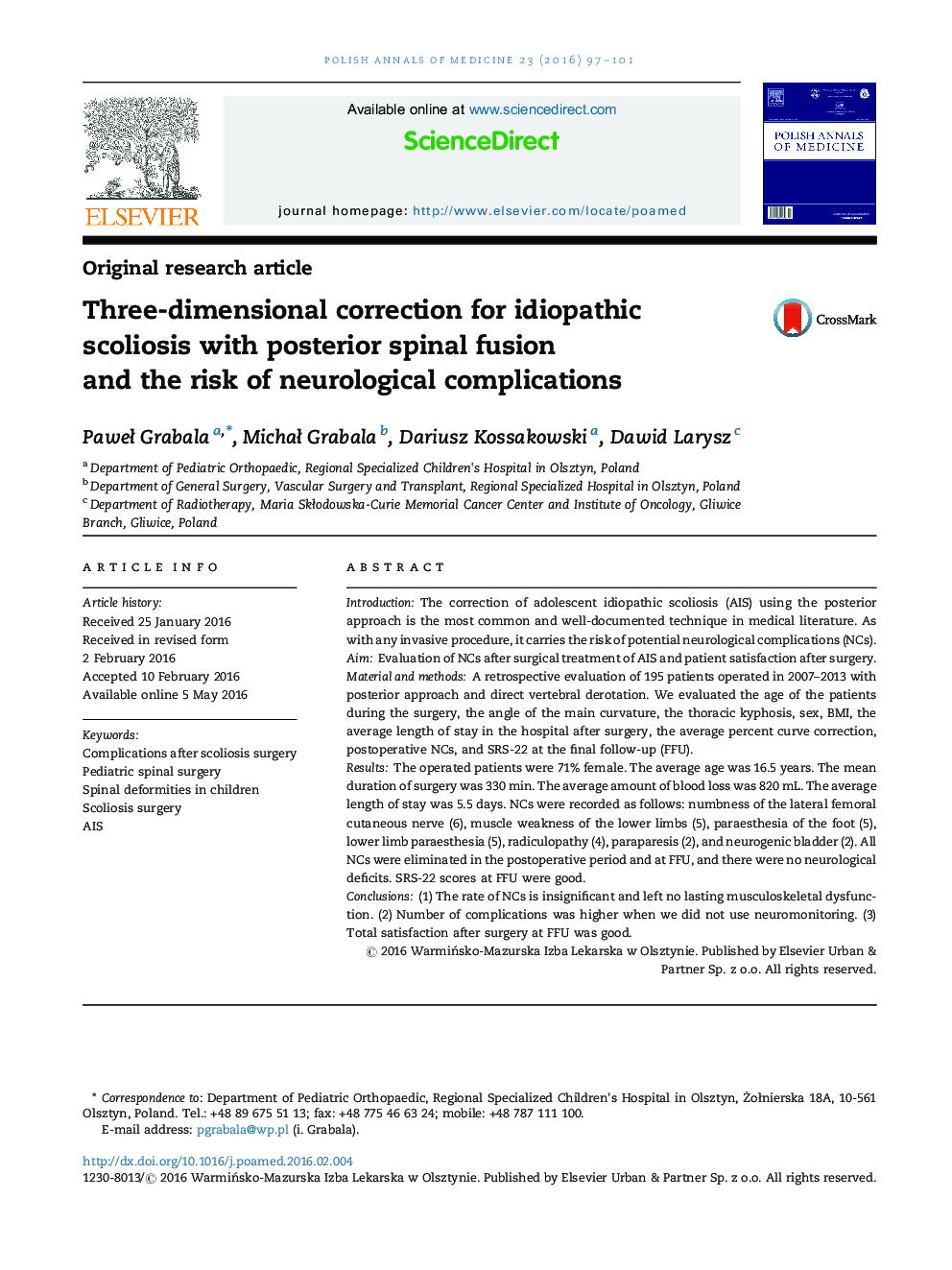| Article ID | Journal | Published Year | Pages | File Type |
|---|---|---|---|---|
| 2675292 | Polish Annals of Medicine | 2016 | 5 Pages |
IntroductionThe correction of adolescent idiopathic scoliosis (AIS) using the posterior approach is the most common and well-documented technique in medical literature. As with any invasive procedure, it carries the risk of potential neurological complications (NCs).AimEvaluation of NCs after surgical treatment of AIS and patient satisfaction after surgery.Material and methodsA retrospective evaluation of 195 patients operated in 2007–2013 with posterior approach and direct vertebral derotation. We evaluated the age of the patients during the surgery, the angle of the main curvature, the thoracic kyphosis, sex, BMI, the average length of stay in the hospital after surgery, the average percent curve correction, postoperative NCs, and SRS-22 at the final follow-up (FFU).ResultsThe operated patients were 71% female. The average age was 16.5 years. The mean duration of surgery was 330 min. The average amount of blood loss was 820 mL. The average length of stay was 5.5 days. NCs were recorded as follows: numbness of the lateral femoral cutaneous nerve (6), muscle weakness of the lower limbs (5), paraesthesia of the foot (5), lower limb paraesthesia (5), radiculopathy (4), paraparesis (2), and neurogenic bladder (2). All NCs were eliminated in the postoperative period and at FFU, and there were no neurological deficits. SRS-22 scores at FFU were good.Conclusions(1) The rate of NCs is insignificant and left no lasting musculoskeletal dysfunction. (2) Number of complications was higher when we did not use neuromonitoring. (3) Total satisfaction after surgery at FFU was good.
